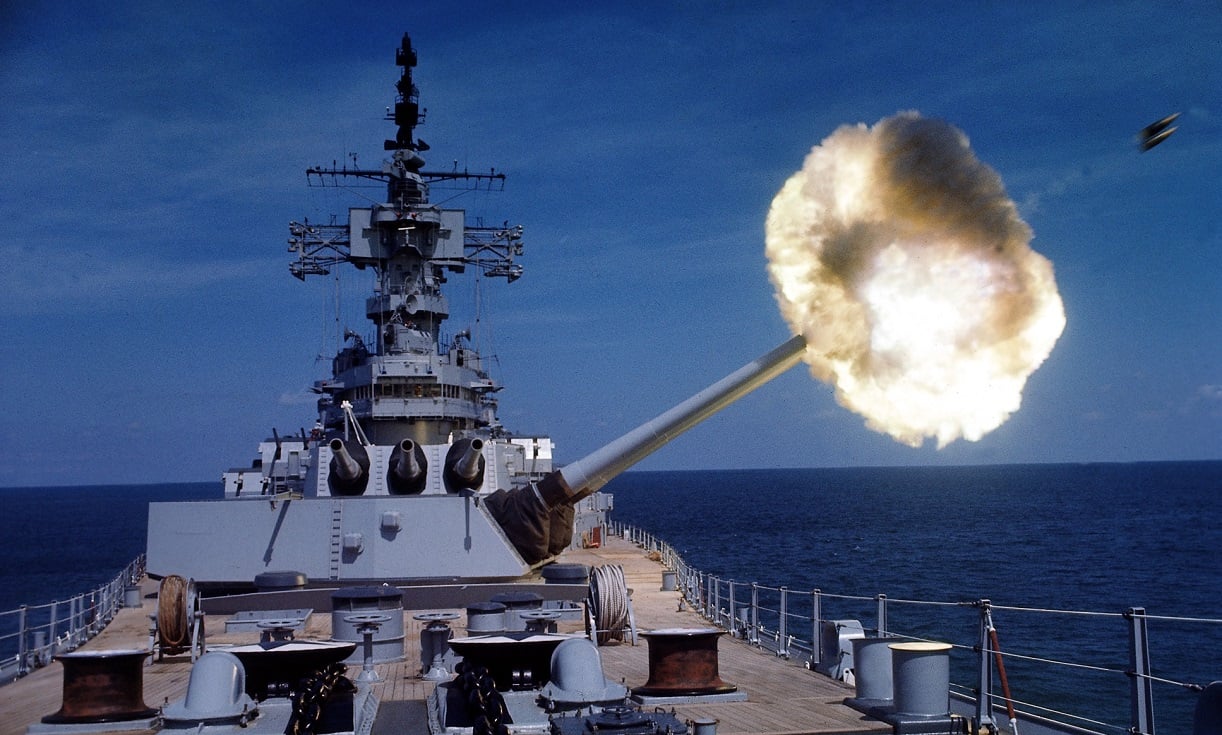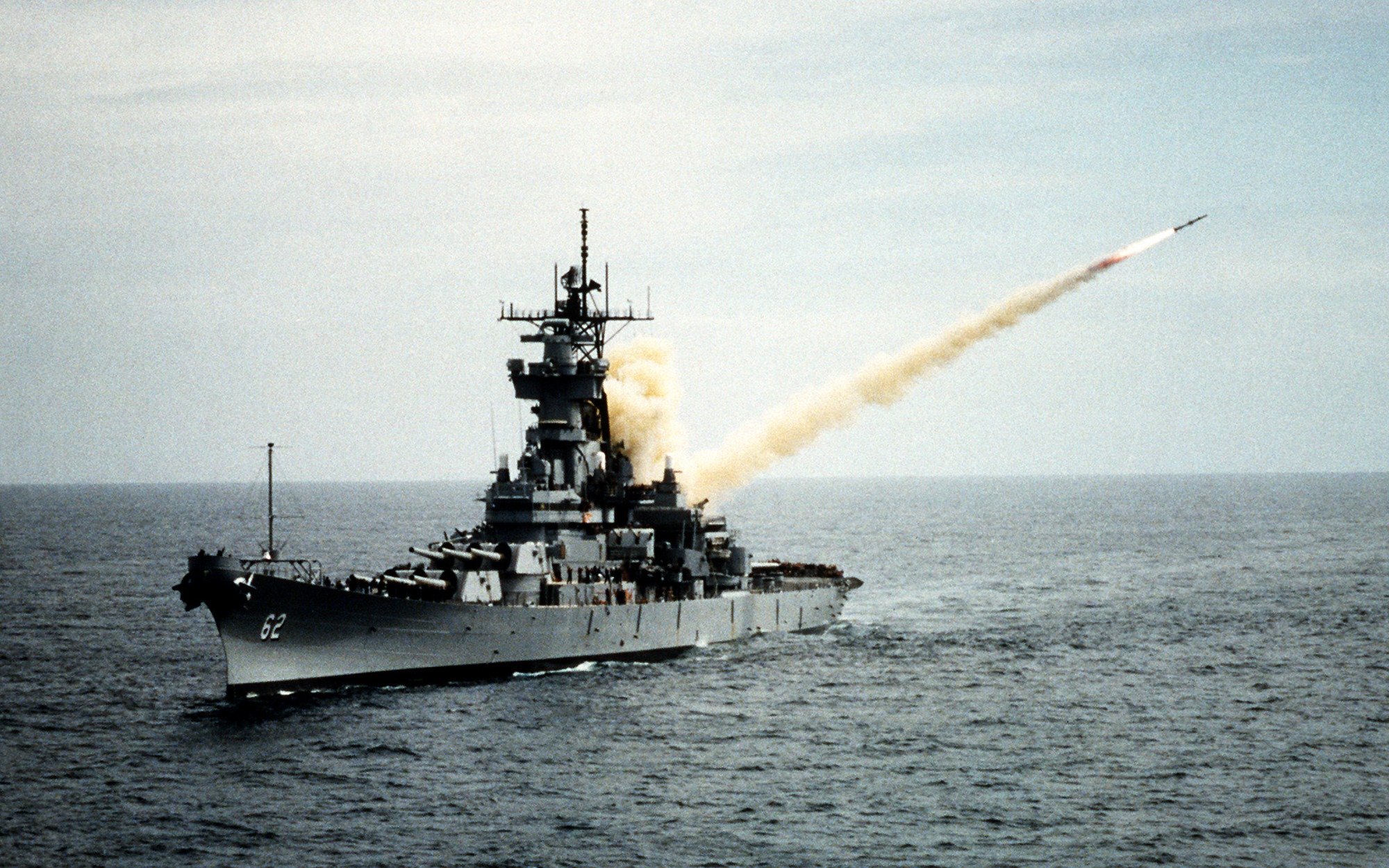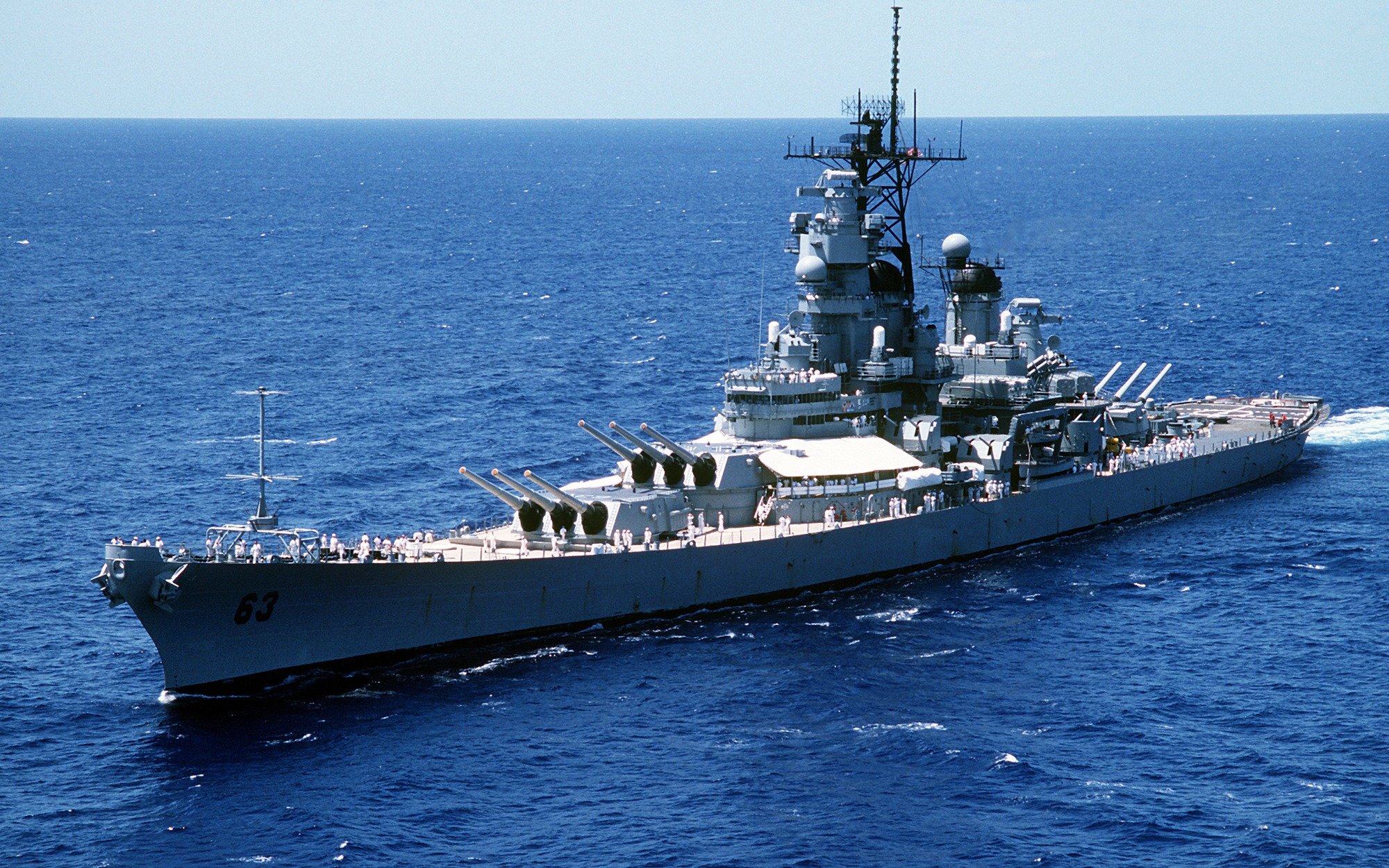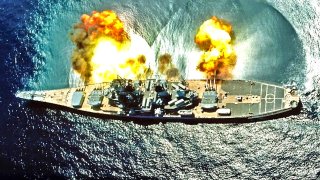Iowa-Class Battleships: Could They Have Been Hybrid Aircraft Carriers?
The Iowa-class battleships, renowned for their service in WWII, Korea, Vietnam, and Desert Storm, were envisioned by some as potential hybrid aircraft carriers or "battlecarriers."
Summary and Key Points: The Iowa-class battleships, renowned for their service in WWII, Korea, Vietnam, and Desert Storm, were envisioned by some as potential hybrid aircraft carriers or "battlecarriers."

-While the Soviet and Japanese navies attempted similar conversions with limited success, the U.S. Navy ultimately decided against converting the Iowa-class due to cost, complexity, and impracticality.
-This historical lesson highlights the current debate about the relevance of large surface warships like aircraft carriers in an era dominated by anti-access/area denial (A2/AD) systems, suggesting that submarines may be more potent in modern warfare.
The Unrealized Potential of Iowa-Class Battlecarriers
The Iowa-class battleship was once considered the pinnacle of naval engineering. Built to be the primary capital ships of the United States Navy in the Interwar years, by the time the Second World War had erupted (at least for the United States), the Pearl Harbor attacks had proven what unpopular mavericks, such as Billy Mitchell, had been warning the military’s leadership about: that battleships were too vulnerable to attacks from carrier-based warplanes.
Still, they were not useless.
During the Second World War, the US battleships had an honorable tour of duty. Beyond that, the Iowa-class battleships served in Korea with distinction and Vietnam.
Their final mission set was in Desert Storm.
But many battlewagon lovers believed that the great warships were destined for greater things than just giant, floating artillery systems (which is what they basically became). Some believed that their size and range should have allowed for innovation from the Navy’s designers. Specifically, that the Iowa-class battleships could have been converted into hybrid aircraft carriers, or a Battlecarrier.
The Soviets Tried (and Failed)
The Soviet Union tried this approach with their Kiev-class which was not an aircraft carrier but was designed to carry some fixed-wing craft. In fact, the Kiev-class was an “unusual combination of a carrier and guided-missile destroyer.” Something similar could have been done with the Iowa-class battleship.
Of course, this would have presented a series of problems that would have marred the otherwise stellar service record of the Iowa-class battleships. The old phrase, “Jack of all trades and master of none” comes to mind. The Soviet Navy’s experience with trying to hybridize its warship capabilities, such as it did by fusing the functions of a guided-missile destroyer with an aircraft carrier in the Kiev-class warship, led to the creation of a class of warships that were quite unpopular with the Soviet Navy.

Each warship in a fleet has a purpose. When one starts fusing the functions of various classes of warships it rarely ends well. Whatever role that her designers had envisioned for the Iowa-class battleship, for the role that she ultimately served in the US Navy, the Iowa-class excelled.
The Japanese Tried, Too (and Failed) on Battlecarriers
During the Second World War, after her carriers had been lost at the Battle of Midway, the Imperial Japanese Navy (IJN) was so desperate to maintain their aircraft carrier capabilities that they converted two of their battleships, the Ise and Hyūga, into hybrid aircraft carrier battleships.
After the war ended, a team of US Navy engineers went to Japan to do a review of Japan’s wartime equipment. There, they found one of the converted battle carriers and spoke with some of the engineers who had built her. According to the reports from the time, “It was a silly waste of a battleship.”
The battle carriers had not even deployed any aircraft in battle.
In fact, the basic design of the battleships meant that, despite having two catapults to push their fighters into the air from the shortened flight deck, the hybridized battle carriers were incapable of launching the high-performance Japanese Zero fighters. It was structural; battleships are battleships and aircraft carriers are aircraft carriers, after all.
The Americans Thought About Making Battlecarriers
Back in the United States, the Americans had talked about redesigning the Iowa-class battleships, USS Illinois (BB-65) and USS Kentucky (BB-66), to full-deck carriers. It was too expensive, and the warships were canceled.

Both after the Korean War and the Vietnam War, the Navy again considered converting its four remaining Iowa-class battleships into aircraft carriers. Ultimately, it was decided that “the ships were too old, too manpower intensive, too expensive to operate, and too costly.”
So, the Iowa-class battleship was never converted into a battle carrier. It is unlikely that these storied warships, had they been converted, would have had any successful performance record.
There is a lesson here, though.
Lessons Learned?
Currently, the US Navy has obsessively built its aircraft carrier fleet to the detriment of other platforms that would likely be more useful in today’s threat environment. The biggest threat US Armed Forces face today comes in the form of the various anti-access/area denial (A2/AD) systems that US rivals have deployed. For whatever reason, rather than fixate like a laser on overcoming this threat, the Pentagon and its Congressional funders continue blundering ahead, building systems that no longer have the same relevance they once did.
What we are witnessing, therefore, is a repeat of the Interwar Years, in which US Navy planners insisted upon building platforms, like the battleship, that could be easily destroyed by carrier-based warplanes.
Similarly, today, aircraft carriers (and other larger surface warships) can be destroyed by A2/AD. No one wants to admit that. Even fewer want to give the crown to the submarine mafia, as submersibles are the likely only manned naval platform that will maintain its potency in a modern war in which A2/AD systems are everywhere.
About the Author
Brandon J. Weichert, a National Interest national security analyst, is a former Congressional staffer and geopolitical analyst who is a contributor at The Washington Times, the Asia Times, and The-Pipeline. He is the author of Winning Space: How America Remains a Superpower, Biohacked: China’s Race to Control Life, and The Shadow War: Iran’s Quest for Supremacy. His next book, A Disaster of Our Own Making: How the West Lost Ukraine, is due October 22 from Encounter Books. Weichert can be followed via Twitter @WeTheBrandon.
All images are Creative Commons.


